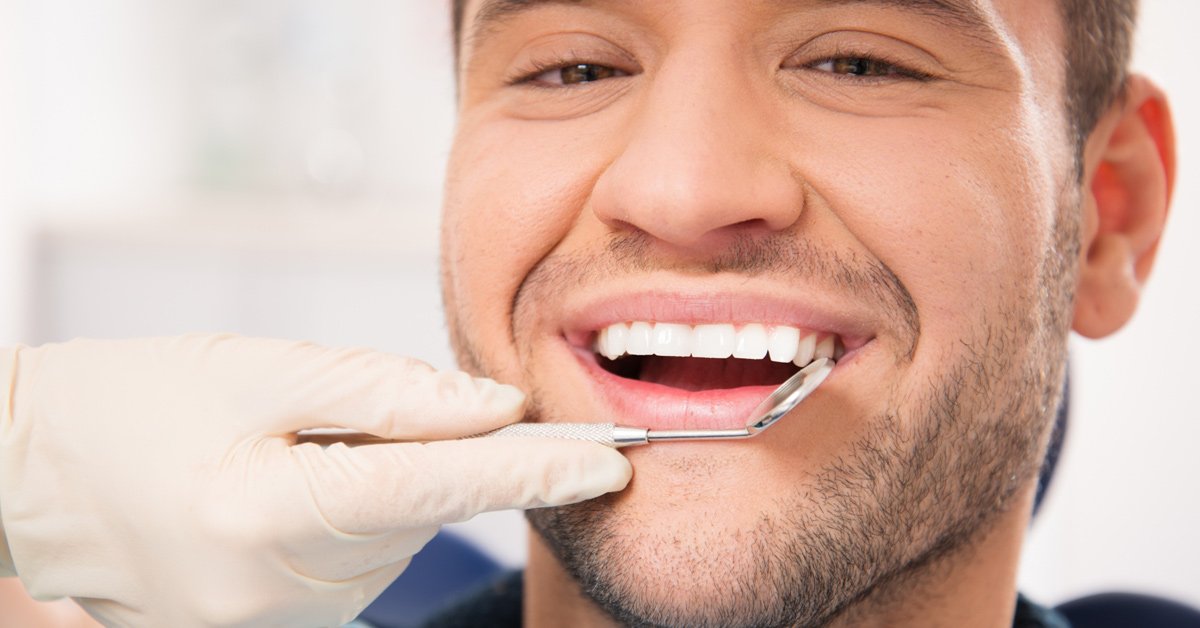Your teeth may suffer damage over time. There are various causes, including tooth decay, trauma, or simple wear and tear. Teeth then can start changing in size or shape. Dental Crown dentistry is one of the best options your dentist can give you when you have teeth problems that affect your self-esteem. So stick for a while and read more! Here at River District Smiles Dentistry, we have prepared a complete guide on everything you need to know about Dental Crowns.
WHAT IS A DENTAL CROWN?
Dental crowns are usually attached to broken teeth through caps. When fillings are ineffective, crowns are applied to cover, secure, and restore the teeth’s contour. Dental crowns can be given using metals, porcelain, resin, and ceramics. Over time, they usually only need frequent, decent oral hygiene and no extra maintenance.
Dental crowns are “caps” which suit your teeth and have the shape of teeth. Imagine it as a snug-fitting cap for your tooth. The crown gives the tooth back its original size, shape, strength, and look. The dental crown, which covers the visible part of the tooth, is bonded to your teeth.
The following conditions may require the use of a dental crown:
- Keeping pieces of a shattered tooth together or preventing a weak tooth from breaking.
- Treat and fix a tooth that has been cracked or badly damaged.
- When a tooth only has a small amount of dental structure remaining, support and cover it with an extensive filling.
- To secure a dental bridge in position.
- To conceal badly stained or crooked teeth.
- A dental implant’s cover.
- To alter something purely aesthetic.
WHAT IS THE PROCEDURE FOR DENTAL CROWN DENTISTRY?
Usually, it takes two dental appointments or more to prepare a tooth for a dental crown. The initial dental visit’s goals are to examine, clean, and prepare the tooth that will get a crown, as well as to take an impression of the tooth so that the crown may be made. During this appointment, a temporary crown to cover the tooth is typically also applied.
The temporary crown can be removed, and the permanent, specially built crown can be placed at the second appointment, which takes place after a dental laboratory has created the height. Here’s a more detailed description of the procedure during the initial and second visits:
Initial visit: Investigation, tooth shape, impression, and a temporary crown
An X-ray of the tooth and jawbone is typically done during the initial dental examination to look for decay and other conditions that could increase the risk of infection or damage to the tooth’s pulp. In addition, before placing a crown on a tooth, specific individuals may need to undergo root canal therapy.
To make room for the crown to be fitted, the tooth will need to be reshaped; the degree of reshaping will depend on the type of crown being used. Because metal-based crowns are typically thinner than porcelain ones, less of the tooth’s natural structure must be removed. To fit the tooth properly for the crown, the top and sides of the tooth are filed down. During this procedure, any tooth decay should also be treated.
After the tooth has been sufficiently shaped, the crown can be produced to fit the tooth as closely as possible by taking an impression of the tooth. The tooth on the opposing jaw that will make contact with the crown when the patient bites typically also have to have an imprint made. This will guarantee that the crown fits nicely on the opposite side of the mouth from where it will sit.
The tooth is typically covered with a temporary crown to protect it until the permanent crown can be made and set in place. At the following dental appointment, this will be taken out to create a way for the permanent crown.
Second Visit: Permanent Crown Placement
In the interval, a dental technician or laboratory forms the crown according to the impressions of the patient’s teeth. The placement of a permanent crown requires more than one dental visit because this procedure can take up to three weeks to complete.
It is time to cover the tooth with the crown after the dental technician or lab has made it. If a temporary crown has been inserted, it must be taken out first.
Typically, a local anesthetic is used to numb the area before the crown fitting procedure. The crown is secured over the teeth using dental cement. If the patient has issues with their bite where the crown meets the opposing tooth, making minor adjustments to the crown’s shape can be a tremendous alternative decision.
BENEFITS OF DENTAL CROWNS
Dental crowns are an efficient approach to restoring a damaged tooth and have numerous significant advantages for oral health. Using a crown can be the difference between keeping a natural tooth and extracting it. Here are the benefits of dental crowns:
- CROWNS AID IN RELIEVING DISCOMFORT
Dental crowns are frequently utilized to finish a restorative procedure and fix structural or enamel damage. These issues often result in the tooth becoming sensitive to pressure or warmth. The remaining part of the tooth needs to be safeguarded after the underlying problem has been resolved, whether through a filling, root canal, or another procedure. A dental crown can lessen sensitivity and shield your tooth from additional harm.
- CROWNS FOR THE TEETH ARE A SIMPLE PROCEDURE
Dental crowns are comparatively simple and minimally intrusive, in contrast to what you might assume about restorative dental procedures. A crown is created for that specific tooth after the tooth has been cleaned of damaged tissue and the enamel has been prepared.
- YOU GET CUSTOM-MADE CROWNS
Your crown will be custom-made by our dental lab experts to closely resemble the original tooth’s form, size, and color. We also provide a variety of materials that matches your requirements and budget. You’ll probably forget you have a crown until the mild stiffness around the area goes away, and nobody will recognize that you have one.
- CROWNS HAVE THE ABILITY TO RESTORE TOOTH APPEARANCE
Although dental crowns are primarily used to repair broken or damaged teeth, they can have aesthetic advantages. They rapidly fix discoloration, malformed teeth, chips, cracks, and fractures since they fit over your existing natural tooth. Because of these advantages, dental crowns are occasionally utilized to attain cosmetic dental goals.
- DENTAL CROWNS LAST FOR A LONG PERIOD
Dental crowns are durable materials that can endure the trauma caused by chewing, biting, and grinding food. Your crowns can last up to 30 years if you practice good dental hygiene and have frequent checkups.
If you’re one of those looking for a solution to fix your smile problems, look no further! Our committed staff at River District Smiles Dentistry can assist patients seeking restorative dentistry from a health-focused dental office in achieving their smiling objectives. Please make an appointment today by visiting our website or calling our customer service hotline. Together, let’s spread smiles and make everyone confident and happy!


